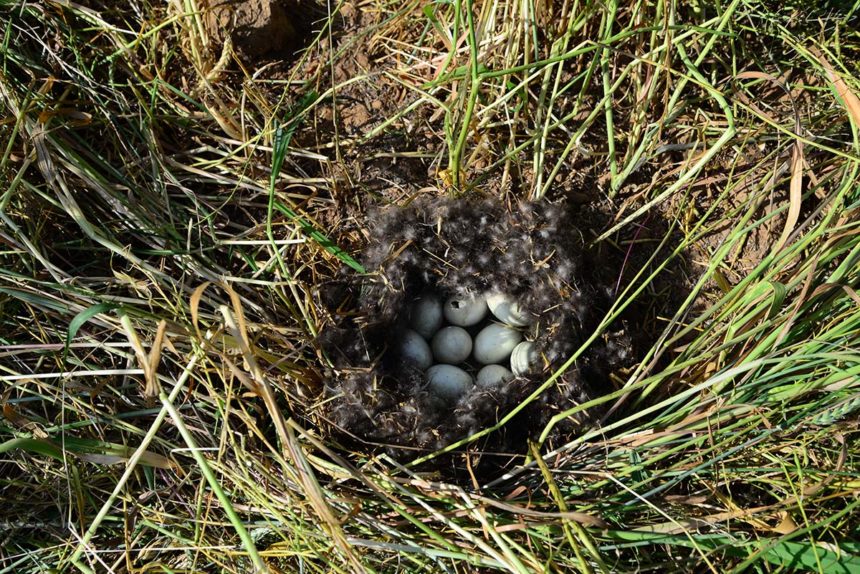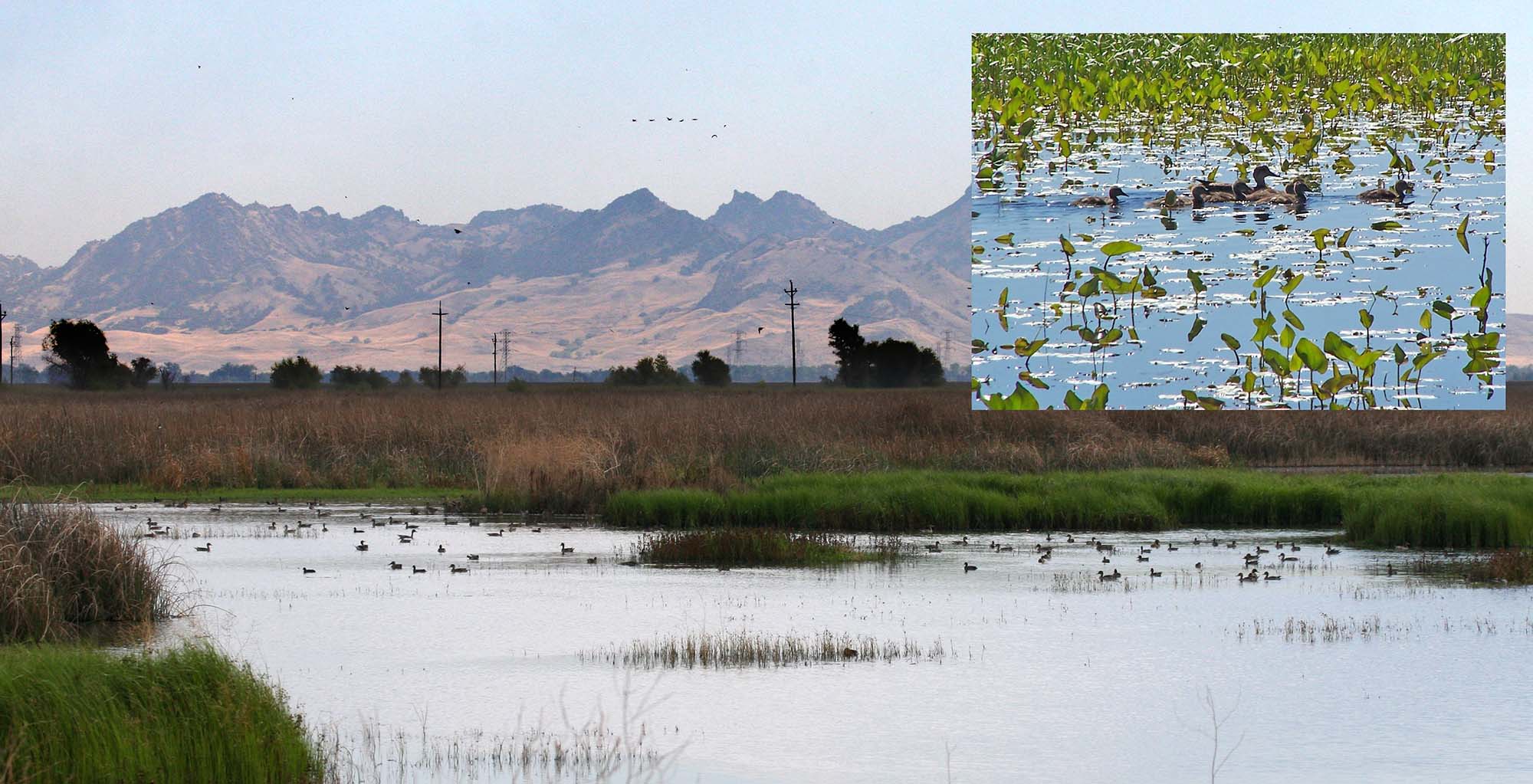To wild ducks, farm fields with crops like wheat or alfalfa look like great places to build a nest: There’s excellent cover (the crop) to hide the nest from predators, and there’s usually water close by (an irrigation ditch) so the hens have a place to take ducklings after they hatch.
Ducks can be successful with this strategy, but the farming equipment often arrives to harvest, mow or disc before the eggs have hatched.
Need help with egg salvage? Contact our Egg Salvage Coordinator, Jason Coslovich, at 916-648-1406 or email jcoslovich@calwaterfowl.org.

FARMERS TO THE RESCUE!
California Waterfowl established the Dwight L. Merriman Jr. Egg Salvage and Duck Rescue Program in 2014 to do one important thing: promote a coordinated voluntary effort to rescue nests imperiled by normal and necessary farming operations.
The effort starts with farmers who enroll in our program. We can sweep their fields for nests before they begin harvest, or provide them with cartons to collect eggs as they harvest. How do they know where the eggs are? Hens will stay with their nests until the equipment is literally almost on top of them, then burst out of cover to get away.
Next, we get eggs to permitted hatcheries that incubate the eggs and rear the ducklings for five to seven weeks with minimal human contact before releasing them into the wild.
THIS IS WHERE THE KIDS COME IN
Most ducklings are released with little fanfare. But at several events each summer, children touring the hatcheries or participating in CWA summer camps get to learn about egg salvage and, with the help of adults, place metal bands on the ducklings’ legs for research before they are released.
Kids of all ages (and let’s face it, their parents, too!) love being able to carefully handle a wild duck, and egg salvage teaches them that wildlife-friendly farmers and conservation volunteers can make a difference. They also learn how important it is for wildlife to have the right kinds of habitat to rear their young.
ABOUT THAT HABITAT...
CWA recognizes that the best thing for ducklings is to be raised by their mothers, not by us. This is why a substantial part of our habitat restoration efforts focus on creating proper breeding habitat wherever we can, including on our own wetland properties.
The formula is simple: We create brood ponds with appropriate vegetation and water depths to protect ducklings and foster a healthy population of invertebrates, which are prized duckling food. Then we seed the uplands next to these ponds to create food-rich grassy areas that look like a great place to nest – and actually are. Nature takes care of the rest.



